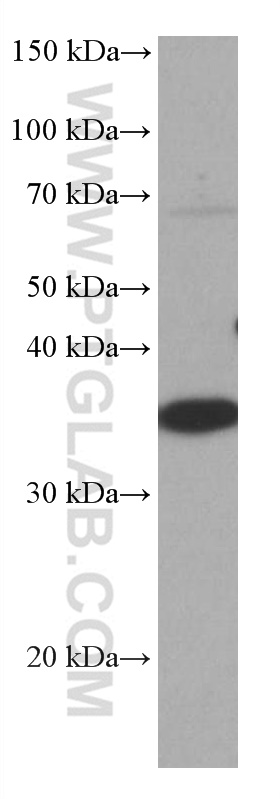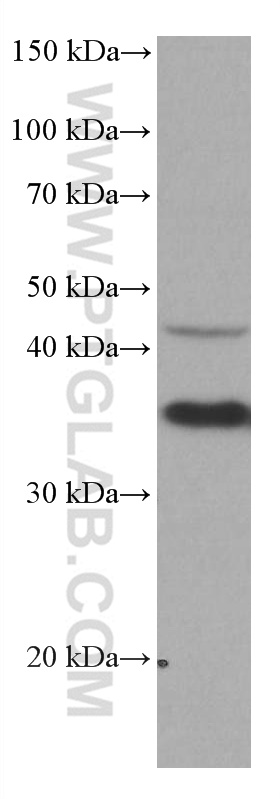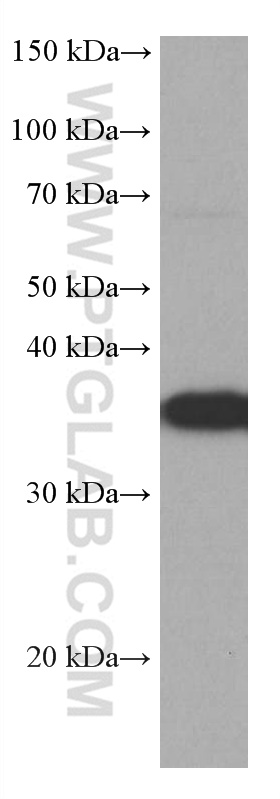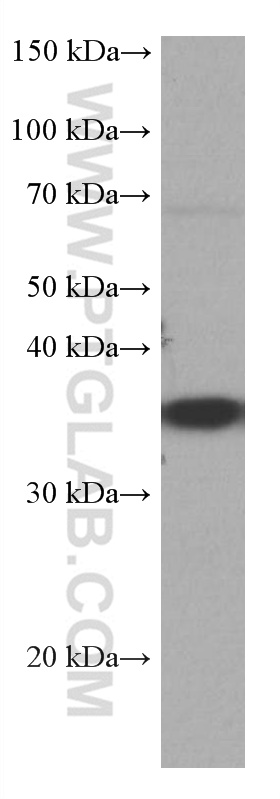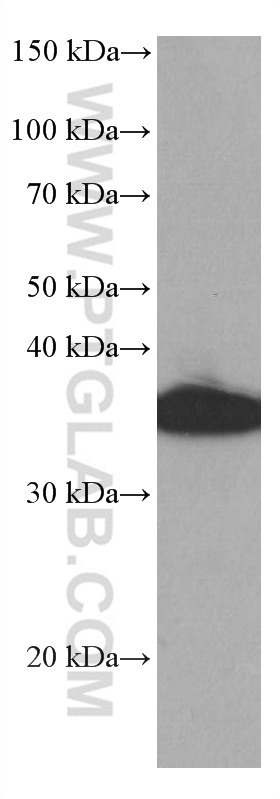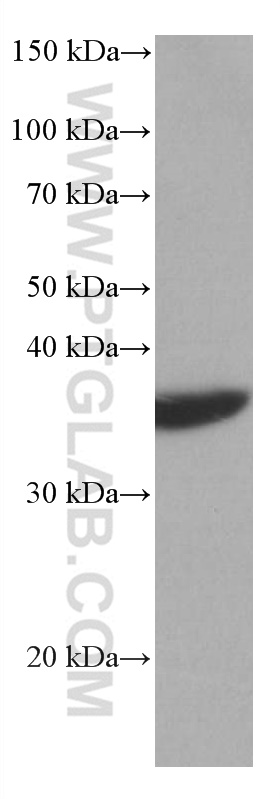验证数据展示
经过测试的应用
| Positive WB detected in | HEK-293 cells, HeLa cells, HSC-T6 cells, Jurkat cells, NIH/3T3 cells, RAW 264.7 cells |
推荐稀释比
| 应用 | 推荐稀释比 |
|---|---|
| Western Blot (WB) | WB : 1:1000-1:6000 |
| It is recommended that this reagent should be titrated in each testing system to obtain optimal results. | |
| Sample-dependent, Check data in validation data gallery. | |
产品信息
67035-1-Ig targets CRK in WB, ELISA applications and shows reactivity with human, mouse, rat samples.
| 经测试应用 | WB, ELISA Application Description |
| 经测试反应性 | human, mouse, rat |
| 免疫原 |
CatNo: Ag28793 Product name: Recombinant human CRK protein Source: e coli.-derived, PET28a Tag: 6*His Domain: 41-304 aa of BC008506 Sequence: STSPGDYVLSVSENSRVSHYIINSSGPRPPVPPSPAQPPPGVSPSRLRIGDQEFDSLPALLEFYKIHYLDTTTLIEPVSRSRQGSGVILRQEEAEYVRALFDFNGNDEEDLPFKKGDILRIRDKPEEQWWNAEDSEGKRGMIPVPYVEKYRPASASVSALIGGNQEGSHPQPLGGPEPGPYAQPSVNTPLPNLQNGPIYARVIQKRVPNAYDKTALALEVGELVKVTKINVSGQWEGECNGKRGHFPFTHVRLLDQQNPDEDFS 种属同源性预测 |
| 宿主/亚型 | Mouse / IgG1 |
| 抗体类别 | Monoclonal |
| 产品类型 | Antibody |
| 全称 | v-crk sarcoma virus CT10 oncogene homolog (avian) |
| 别名 | 2B7E1, Adapter molecule crk, CRKII, p38, Proto oncogene c Crk |
| 计算分子量 | 34 kDa |
| 观测分子量 | 34 kDa |
| GenBank蛋白编号 | BC008506 |
| 基因名称 | CRK |
| Gene ID (NCBI) | 1398 |
| RRID | AB_2882350 |
| 偶联类型 | Unconjugated |
| 形式 | Liquid |
| 纯化方式 | Protein G purification |
| UNIPROT ID | P46108 |
| 储存缓冲液 | PBS with 0.02% sodium azide and 50% glycerol, pH 7.3. |
| 储存条件 | Store at -20°C. Stable for one year after shipment. Aliquoting is unnecessary for -20oC storage. |
背景介绍
CRK is a member of an adapter protein family that binds to several tyrosine-phosphorylated proteins. CRK has several SH2 and SH3 domains (src-homology domains) and is involved in several signaling pathways, recruiting cytoplasmic proteins in the vicinity of tyrosine kinase through SH2-phosphotyrosine interaction. The N-terminal SH2 domain of this protein functions as a positive regulator of transformation whereas the C-terminal SH3 domain functions as a negative regulator of transformation.
实验方案
| Product Specific Protocols | |
|---|---|
| WB protocol for CRK antibody 67035-1-Ig | Download protocol |
| Standard Protocols | |
|---|---|
| Click here to view our Standard Protocols |

